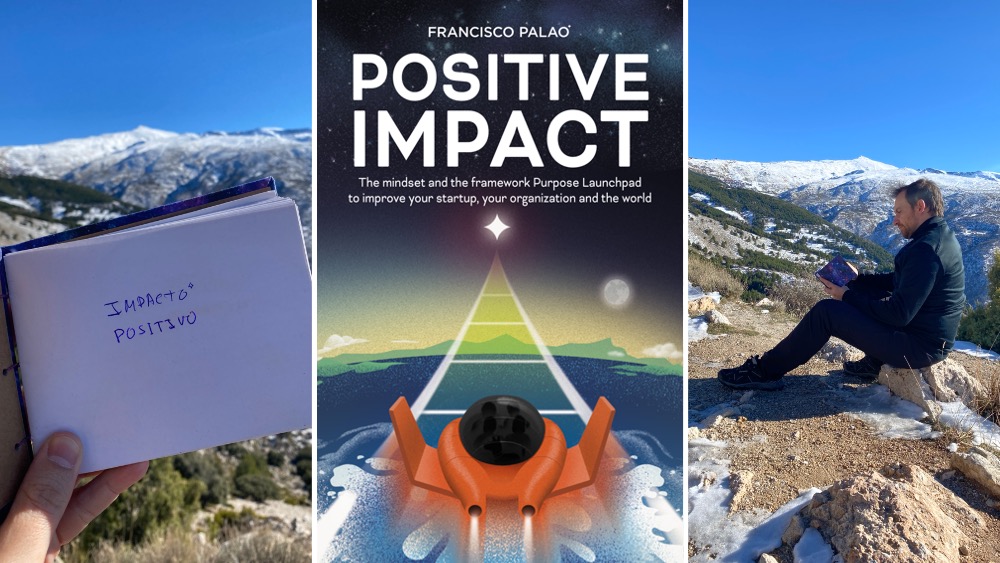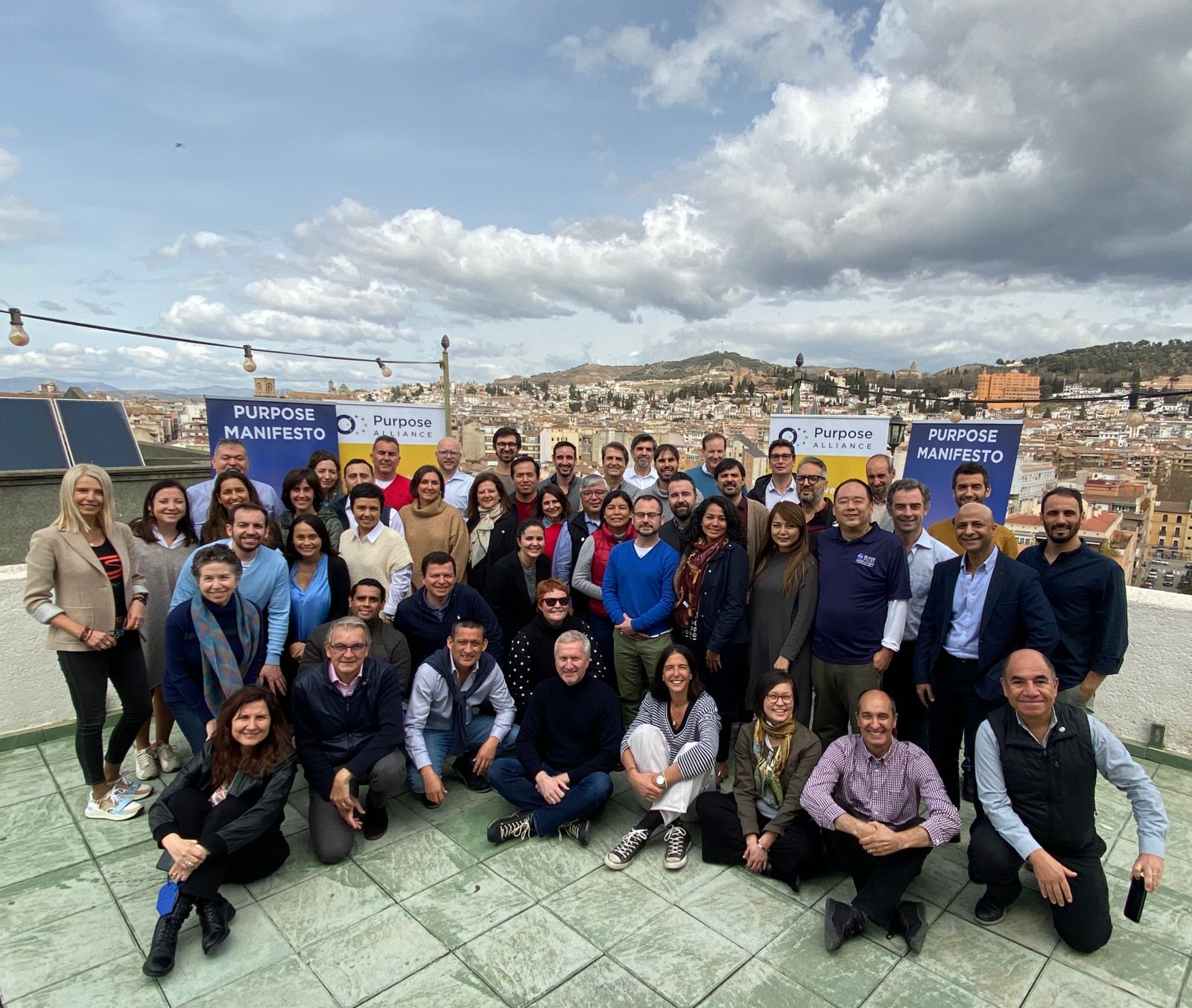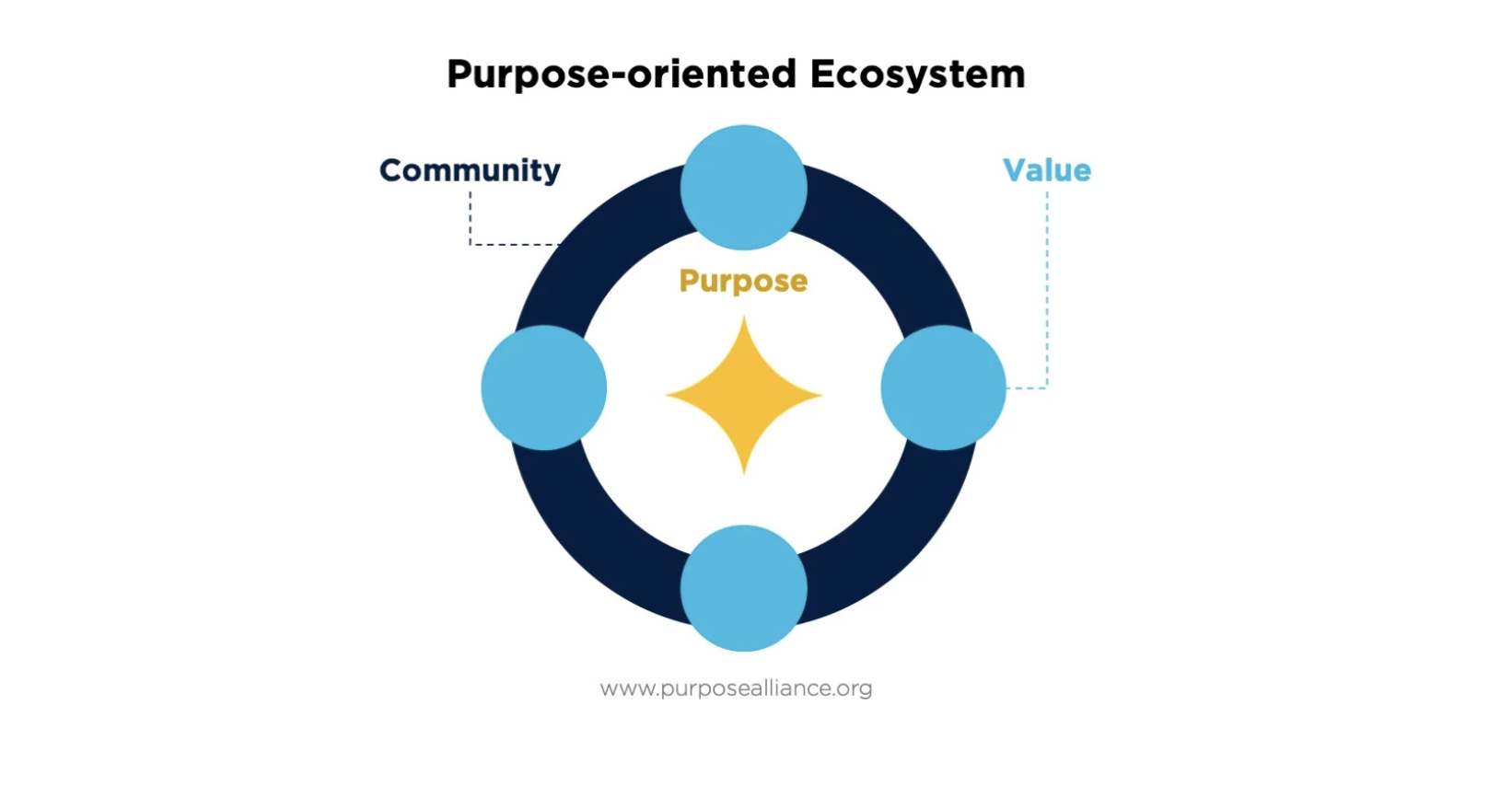Author:
Francisco Palao
(Purpose Alliance founder &
Purpose Launchpad
Master Trainer)
We are living a turning point in humanity. Increasingly, people and organizations are becoming more purpose-driven, which is transforming the world we live in. In this post I describe how organizations have evolved and how purpose-driven ecosystems connect communities with abundance to create massive impact.
The power of purpose
We are all here to create something that did not exist before we were born. Both individuals and organizations need to give meaning to their existence. We need to do things that make us feel alive, that make us believe in what we do, that make us feel that what we do makes sense.
He said
Simon Sinek in a recent interview
, “The purpose of an automobile is not to consume fuel. The purpose of a company is not to make money. The purpose of a vehicle is to transport us to a place. And the purpose of a company is to achieve something, to advance a greater cause that contributes to society.“. Elon Musk also made reference to the importance of purpose in his famous phrase: “Life cannot be about solving problem after problem. There must be a motivation that makes you wake up in the morning, with the desire to be alive.“.
My personal purpose is “evolve humanity” and, purpose being such a relevant topic for all of us, that’s why I decided at the time to write the book
Massive Transformational Purpose
with Ángel María Herrera, where we opened to the community the tool
MTP Canvas
to help people and organizations find their purpose and give meaning to their existence.
In fact, we are living a turning point in humanity. Increasingly, people and organizations are becoming more purpose-driven, which is transforming the world we live in.
Purpose-driven ecosystems
Traditional companies operate under a business model based on scarcity, offering a scarce service or product, in a market that sooner or later becomes a red ocean where competition generates a margin war that ends up consuming the industry.
A few years ago, a different organizational model began to emerge. Organizations connected to abundance, whose business models take advantage of this new environment. For example, energy companies and, more specifically, companies that produce solar panels, since they connect with the source of abundance of primary energy (the sun) and offer products based on this source of abundance.
Some organizations have a desire for global reach, and this is where the Exponential Organization emerges, connecting with abundance and managing it in a way that scales exponentially. For example, AirBnB, which connects with an abundance of accommodations and today is already the largest lodging chain in the world (without even owning a single hotel).
But there are organizations that have gone beyond exponential growth in a given industry. There are organizations that have understood that the concept of industry generates scarcity and that it is now obsolete Which industry does Google belong to? Which industry does Apple belong to? None, and many at the same time. These organizations have become purpose-driven ecosystems.
In the past, Apple was a company focused on the computer industry. And that’s what they did, they sold computers to their customers. Now, Apple, has transformed into an ecosystem focused on one purpose: “Empowering creative exploration and self-expression.” And around their purpose they have created a series of products, services and companies that offer value to their users. Apple continues to offer computers, but also phones, watches, apps, music, online content, and much more. Apple has become an ecosystem focused on a purpose, not a particular industry.

Purpose-driven ecosystems attract communities of people aligned with their purpose, who cease to be customers of an industry-focused company and become users of the various services offered by the ecosystem.
The most important elements of this type of ecosystem-based business models are:
-
The purpose, which is the raison d’être of the ecosystem and everything that happens within it. Purpose is at the heart of the ecosystem, and shapes everything else with the goal of generating massive impact.
-
The community, which are those people and organizations aligned with the purpose and help in one way or another to make it a reality. The community is the ecosystem membrane, and the larger it is, the greater its impact.
-
Value, which is generated by a set of organizations, products and services the ecosystem offers to users, to facilitate the world in general and community members in particular to make the purpose real.

When we understand this new paradigm, we can understand many of the things that are happening in the world today. This is the main reason why Tesla has a market capitalization greater than the sum of all its ‘competitors’ in the automotive industry. Because Tesla is not a company focused on the automotive market, Tesla is an ecosystem with a very clear purpose: “to accelerate the global transition to a sustainable energy model“.
Comparing Tesla cars to any other brand (BMW, Audi, etc.) is like comparing BlackBerry to the iPhone. While BlackBerry focused on trying to improve its product, Apple generated an ecosystem that included much more than just a phone. And this is what Tesla is doing now: launching a series of products, services and organizations around its purpose, for a growing community of users linked to this purpose.
Creating an impact, together!
One of the most relevant effects that purpose-driven ecosystems bring is that the user, the community member, has much more power than before. In fact, when we find two ecosystems with similar purposes, direct competition disappears thanks to the interaction generated at the community level.
Competition generated by scarcity-based markets is a thing of the past. Members of communities that live their purpose in a real way, collaborate and belong to different communities at the same time. Users of purpose-driven ecosystems use different products and services from different ecosystems by putting at the center what really matters: purpose.
Let’s look at another example, now with the ecosystem generated by Google, whose purpose is to “organize the world’s information and make it universally accessible and useful“.
Google has built a series of products, services and organizations around this purpose that has attracted a global community of billions of people. And it is these people, it is the community, who have the power and use these products and services in combination with those of other similar ecosystems oriented to a purpose aligned to that of Google.
Google Search users search Wikipedia (whose purpose is to “benefit readers by being a free encyclopedia accessible to all”) or TED (whose purpose is to “expand worthwhile ideas”), and Google provides this information in its search results. Google Docs users also use Microsoft Word, Excel, etc. (and other similar) products when organizing their information into different types of documents. Google Calendar users organize their calendar information by combining the functionality of other similar applications such as Windows Calendar, Apple Calendar, etc.

In short, google’s purpose is being fulfilled thanks to the ecosystem that has been created around its purpose, and that includes external elements and organizations oriented to the same purpose, complementing the value for the community. And most importantly, community members belong to multiple ecosystems at the same timeThe company’s strategy, making use of the value offered by each of them to create a massive impact that focuses on the essence of the union of all these purposes, which is at the center of it all, as can be seen in the image above.
Communities are made up of people and people are in these communities because of the power of purpose and the positive impact (including a sense of responsibility) it can have on the world.
The power of people and purpose is getting ecosystems that share purpose to collaborate without even needing a formal collaboration agreement from their leaders. The power of purpose is driving new concepts, new ways of doing things, new models and bottom-up approaches that are creating a better world.
At
Purpose Alliance
something similar is happening thanks to our purpose-driven ecosystem approach (“empowering extraordinary people to create the future“), which is generating interaction with members of different communities that use the different elements of our ecosystem (
Purpose Launchpad
,
Purpose Evolver,
Purpose Services
etc.) to make their purposes, aligned with ours, a reality.
Some of these people come from communities such as
Singularity University
(whose purpose is “to educate, empower and inspire leaders to use exponential technologies to solve humanity’s greatest challenges“), which I continue to attend as an alumnus and where I had the opportunity to create the first startup acceleration process. Another good example is
OpenExO
(“Transforming the world for a better future“), a community to which I also belong and where I have also made my contribution by designing the
ExO Sprint
and writing the book ‘
Exponential Transformation
‘.
Not to mention other communities such as
Abundance 360
(“understanding and using exponential technologies to transform business“),
Ashoka
(“shaping a social entrepreneurship environment globally“) or
Women4Ipmact
(“unlocking the full potential of women for a better world“).
All of these communities are very much aligned in purpose with the
Purpose Alliance
and, in fact, there are numerous people who belong to more than one of these communities at the same time, as they are driven not by an industry, but by purpose.
From here, I encourage all the people who feel aligned with any of these purposes to join all these communities and combine them in the best possible way so that we can really achieve the purpose. that we all desire, since similar purposes may have different ways of expression, but the essence is shared.
The important thing is not to be the market leader, but to contribute to the fulfillment of that purpose.
If the purpose is fulfilled, all entities that share it will have succeeded.
If the purpose is fulfilled, all entities that share it will have more opportunities.
If the purpose is fulfilled, the world will become a better place to live. And who doesn’t want this to happen?
Let’s create a massive impact, all together!
Founder of Purpose Alliance

![Grafica_ExOLaunchPad_Analisis-[Recuperado]24422](https://purposealliance.org/wp-content/uploads/2024/01/Grafica_ExOLaunchPad_Analisis-Recuperado24422.jpg)






[…] separating reality from the organization’s purpose (just as I detailed in my post called “Industries Create Scarcity, Purpose Generates Abundance”). Tesla, whose purpose is to “accelerate the world’s transition towards a sustainable energy […]